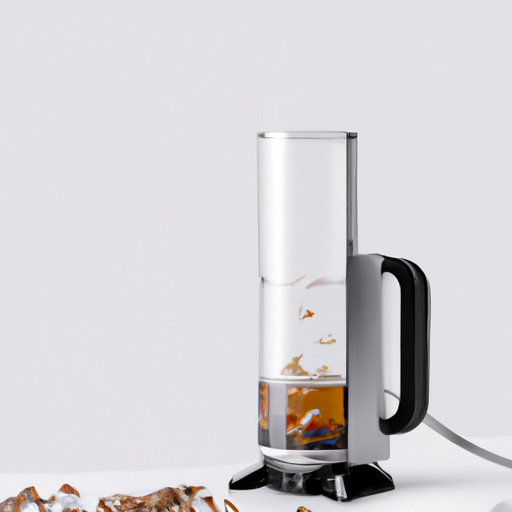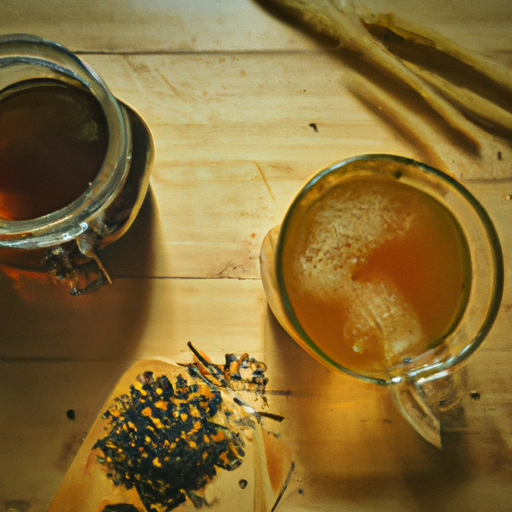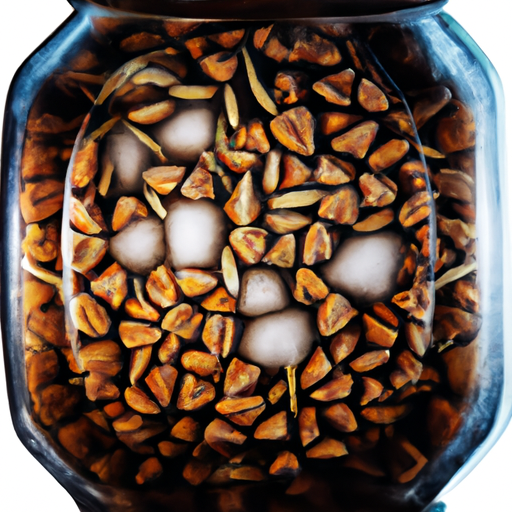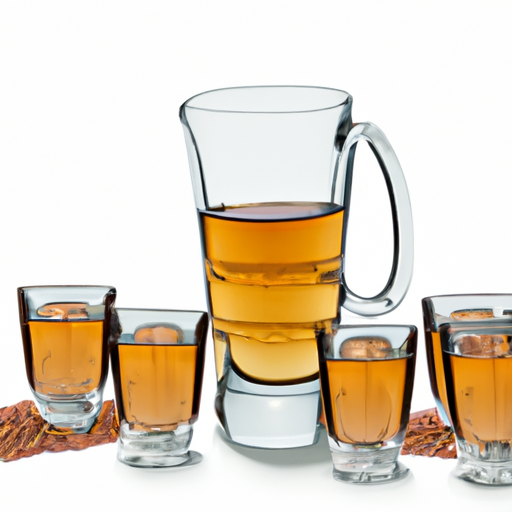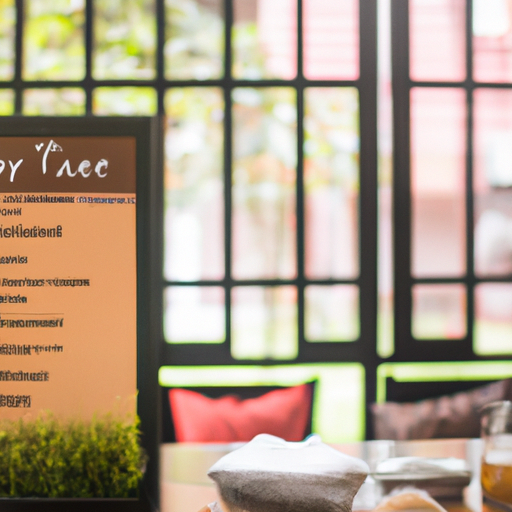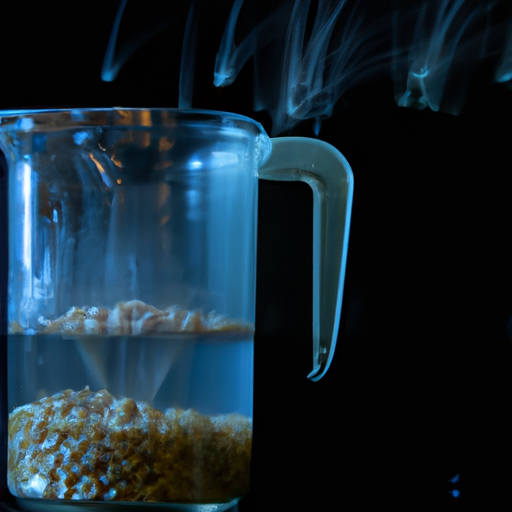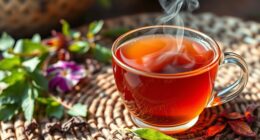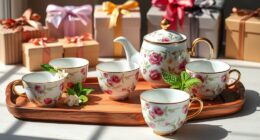Initially, barley tea didn’t capture my interest. It had the flavor of water that seemed to have been sun-bathed excessively. However, after discovering the technique for preparing a more robust version, it has become one of the beverages I enjoy the most.
If you’re looking for a warm and comforting drink with a nutty flavor, then you’ll want to learn how to make strong barley tea.
Barley tea is a popular drink in many countries, including Japan, Korea, and China. It’s made from roasted barley grains and has a slightly sweet taste with hints of caramel and nuttiness.
The key to making a strong brew is all about the quality of your ingredients and understanding the steeping process. So let’s dive into everything you need to know about making stronger barley tea.
Key Takeaways
- Use more barley grains for a heartier flavor
- Increasing steeping time can extract more flavor and aroma
- Use freshly boiled water and cover tea while steeping
- Steep for at least 10 minutes for optimal results
Understanding the Basics of Barley Tea
To better understand the basics of barley tea, you’ll want to familiarize yourself with its origins and brewing methods. Barley tea, also known as mugicha in Japanese, is a popular beverage in East Asia that is made from roasted barley grains. This tea has been enjoyed since ancient times due to its numerous health benefits such as aiding digestion and promoting hydration.
Barley tea is an excellent choice for hydration because it contains no caffeine or added sugars. Drinking this tea regularly can help you stay hydrated without the negative effects associated with sugary drinks or caffeinated beverages. Additionally, barley tea is rich in antioxidants which help protect your cells against damage caused by free radicals.
Choosing high-quality barley grains is essential when making stronger barley tea. Look for grains that are plump and have a uniform color and texture. Avoid grains that look shriveled or discolored as they may be stale or damaged. Using fresh, high-quality ingredients will ensure that your barley tea has the best possible flavor profile and health benefits.
Choose High-Quality Barley Grains
You’ll want to grab some top-notch barley grains if you’re looking to brew a killer cup of this classic beverage. Don’t settle for anything less than the best, or you might end up with lackluster results that won’t satisfy your taste buds. And hey, who wants that when there’s so much potential for greatness?
So head to your local market (or hop online) and start scoping out the finest options available. It may take a little extra effort, but trust us – it’ll be worth it in the end!
When selecting barley grains for brewing tea, quality should be at the forefront of your mind. Look for grains that are plump and have a shiny appearance. They should also have an even color and texture without any discoloration or blemishes. Keep in mind that higher quality barley will produce a better flavor profile in your tea.
To ensure maximum flavor, consider buying organic barley grains from trusted sources. These grains may cost more than non-organic options, but they offer superior taste and quality due to their cultivation methods. Plus, choosing organic means supporting sustainable farming practices that benefit both the environment and farmers.
Now that you’ve selected your high-quality barley grains, it’s time to move on to roasting them for optimum taste and aroma.
Roasting the Barley Grains
Now that you’ve got your hands on some top-notch barley grains, it’s time to roast them to perfection for a rich and aromatic cup of tea. Roasting is an essential step in making barley tea. It enhances the flavor profile of the barley and gives it its distinct nutty aroma.
There are different roasting techniques for barley grains, but the most common method is using a frying pan or wok over medium heat. Place the grains in the pan and stir continuously until they turn golden brown. You can also use an oven if you prefer a more consistent roast. Spread the grains evenly on a baking sheet and bake at 350°F for about 15 minutes or until they turn golden brown.
The roasting process affects the flavor profile of your barley tea, so make sure not to over-roast or under-roast your grains. Over-roasting can result in burnt flavors, while under-roasted grains may not bring out enough aroma and flavor. Once you’ve roasted your barley to perfection, proceed with boiling water for a refreshing cup of tea.
Boiling water is an important step in making strong barley tea. The temperature of the water should be around 190-200°F to extract maximum flavor from the roasted grains. Boil water in a kettle or pot until it reaches this temperature range before pouring it over your roasted barley grains. Let it steep for around 5-10 minutes before straining out any solids and enjoying your delicious homemade brew!
Boiling the Water
So now that we’ve got our roasted barley grains ready, it’s time to boil some water and make ourselves a delicious cup of barley tea. As an avid tea-drinker, I know that the temperature of the water and the ratio of water-to-tea can greatly affect the taste and quality of the final product.
For barley tea, I recommend using boiling hot water to extract all the flavors from the roasted grains, and a ratio of 1:10 (one part tea to ten parts water) for a stronger flavor profile.
Let’s get started!
Water Temperature
If you want stronger barley tea, try steeping it in hot water instead of warm. Water temperature plays a crucial role in determining the strength and flavor profile of your tea.
Different tea varieties require different water temperatures for optimal brewing, and barley tea is no exception. When using hot water to brew barley tea, you’ll notice a more robust flavor with deeper notes of nuttiness and sweetness. The higher temperature allows the barley to release its full potential, creating a more flavorful cup of tea.
On the other hand, if you use warm or lukewarm water, the resulting brew will be weaker in taste and aroma. Therefore, it’s essential to pay attention to your water temperature when brewing barley tea for maximum flavor and quality.
Moving forward to the next subtopic about ‘water-to-tea ratio’, let me guide you on how much barley should go into each cup of hot water for that perfect cup of strong and flavorful tea.
Water-to-Tea Ratio
Achieving the perfect cup of barley tea is like creating a masterpiece, with just the right balance of water and grains to make a harmonious blend. To achieve this, measuring tools are essential in ensuring accurate ratios. Experimenting with ratios can yield different flavors and strengths, making it important to find your preferred ratio.
Here are three tips to help you achieve the perfect water-to-tea ratio:
- Use a digital scale for precise measurements.
- Start with a 1:10 ratio (1 part barley grains to 10 parts water) and adjust according to taste.
- Consider using more or less water depending on the quality of your barley grains.
When experimenting with ratios, remember that the quality and flavor profile of your barley tea can also be affected by factors such as water temperature and steeping time.
Now that we’ve covered how to measure out your ingredients accurately, let’s move onto how long you should steep your barley tea for maximum flavor extraction.
Steeping the Barley Tea
First, you’ll want to add your desired amount of barley tea leaves into a teapot or infuser. The amount will vary depending on your preference, but a good rule of thumb is about 1-2 tablespoons per cup of water.
After adding the leaves, pour hot water over them and let steep for at least 5 minutes. Alternative steeping methods can also be used to make stronger barley tea. One method is cold brewing, where you let the tea leaves soak in room temperature water for several hours or overnight. This method produces a smoother and less bitter flavor profile.
Another method is using higher temperature water and shorter steeping times, which can extract more flavor from the tea leaves. Benefits of longer steeping times include a stronger flavor profile and increased health benefits. However, be cautious not to oversteep as it can result in bitterness and loss of quality in taste.
It’s best to experiment with different steeping times until you find what works best for your personal preference. To add flavor to your barley tea without overpowering its natural taste, consider adding fresh herbs like mint or lemon balm or even a slice of ginger root. These additions can enhance the flavors of the tea while still maintaining its health benefits and distinctive characteristics.
Adding Flavor to Your Barley Tea
Enhancing the taste of your barley tea can be easily done by adding fresh herbs or a slice of ginger root for a unique twist on this healthy and delicious beverage. But there are also other options you can explore to add more flavor to your tea. Here are some ideas:
-
Flavored syrups: If you’re looking for a quick and easy way to sweeten your barley tea, flavored syrups are the way to go. You can choose from a variety of flavors such as vanilla, caramel, or even hazelnut.
-
Herbal infusions: One way to make your barley tea more flavorful is by adding herbal infusions like chamomile, lavender, or mint. These herbs not only add flavor but also have medicinal properties that can benefit your health.
-
Experiment with fruits: Another option is to experiment with different fruits like lemon, lime, or orange slices for a citrusy kick in your tea. You can also try adding berries like strawberries or blueberries for a sweet and refreshing taste.
-
Use quality ingredients: Regardless of what flavors you choose to add to your barley tea, it’s important to use high-quality ingredients that will enhance the overall taste of the beverage.
Incorporating these tips into making your barley tea will result in a flavorful and satisfying drink that’s perfect for any time of day. Now let’s move on and learn about another method – the cold brew method!
Cold Brew Method
Adding flavor to your barley tea is a great way to make it more enjoyable. But did you know that you can also make your barley tea stronger using the cold brew method? This technique involves steeping the tea leaves in cold water for an extended period, resulting in a smoother and less bitter taste.
To make cold brewed barley tea, start by placing 1 cup of barley tea leaves in a pitcher or jar. Add 4 cups of cold water and stir gently to combine. Cover the container with a lid or plastic wrap and store it in the refrigerator for at least 8 hours or overnight.
Once the steeping time is complete, strain out the tea leaves using a fine-mesh sieve or cheesecloth. You may need to do this multiple times to ensure all of the debris has been removed from the liquid. The resulting brew should be smooth and refreshing with little to no bitterness.
Flavor variations are endless when it comes to barley tea! Try adding some fresh herbs like mint or basil for a burst of freshness, or sweeten with honey or agave syrup for added sweetness. Serve over ice with a slice of lemon for an invigorating summer drink.
Now that we’ve learned how to make stronger barley tea using the cold brew method, let’s move on to discussing how we can properly store our leftover brews without compromising their quality.
Storing Barley Tea
To keep your barley tea fresh and flavorful, it’s crucial to store it properly in an airtight container or bottle, sealing in its delicate aroma and taste like a precious memory. Here are some tips for long term storage and flavor preservation:
- Keep the tea away from direct sunlight or heat sources as they can alter the taste of the tea.
- Store the tea at room temperature or in a cool place to prevent moisture buildup that can lead to mold growth.
- Use an opaque container to block out light and extend shelf life.
- If you plan on storing large amounts of barley tea for extended periods, consider freezing it in small portions.
Proper storage techniques will keep your barley tea fresh and delicious for longer periods, allowing you to enjoy its unique flavor profile whenever you want.
Now that we’ve covered how to store your barley tea correctly, let’s move onto tips for adjusting its strength without losing any of its distinct character.
Tips for Adjusting the Strength of Barley Tea
When it comes to adjusting the strength of barley tea, I find that using more barley grains is a great way to achieve a richer, bolder flavor profile. Simply adding an extra tablespoon or two to your brew can make all the difference.
Another trick is to increase steeping time – letting the tea sit for an extra 5-10 minutes can bring out more of its natural sweetness and depth. By experimenting with these methods, you can create a personalized barley tea that perfectly suits your taste preferences.
Using More Barley Grains
For a heartier and more robust flavor, you can increase the amount of barley grains used in your tea blend. Barley is known for its many health benefits, such as reducing inflammation, aiding digestion, and promoting better sleep. However, if you find the taste too mild or weak, adding more barley grains to your tea can enhance its flavor profile.
Aside from using more barley grains, there are also alternative grains that you can use for brewing tea. Some examples include corn silk, buckwheat groats, and roasted grain blends. These options can add different flavors and textures to your tea while still providing similar health benefits as barley. Experimenting with different grains can also help you find a unique blend that suits your taste preferences.
To further intensify the flavor of your brewed tea blend, consider increasing steeping time after incorporating more barley or alternative grains into the mix. This will allow the flavors to become bolder and more pronounced in each cup.
Increasing Steeping Time
By steeping your blend longer, you’ll be able to extract even more flavor and aroma from the grains, resulting in a richer and more satisfying cup of tea. As a tea enthusiast, I’ve found that increasing my steeping time has made a significant difference in the taste of my barley tea.
Here are five tips to help you make stronger barley tea with longer steeping times:
- Use freshly boiled water: Boiling water will help open up the grains, allowing for better flavor infusion during the steeping process.
- Cover your tea while it steeps: By covering your barley tea with a lid or saucer while it steeps, you can prevent heat loss and ensure maximum flavor extraction.
- Steep for at least 10 minutes: For optimal results, let your barley tea steep for at least 10 minutes. You can also experiment with longer times to achieve an even bolder flavor.
- Try cold brewing: If you’ve got extra time on hand, try making cold-brewed barley tea by letting it sit overnight in cold water. This method produces a smoother taste and can be enjoyed hot or cold.
- Adjust the amount of barley based on taste preference: The amount of barley used will affect how strong or mild your tea tastes. Experiment with different quantities until you find what works best for you.
With these tips in mind, you’ll be able to enjoy a flavorful cup of stronger barley tea every time. Remember that longer steeping times lead to better flavor infusion and ultimately result in a more satisfying drinking experience.
Frequently Asked Questions
How many cups of barley tea can be made from a single batch?
When it comes to making barley tea, the batch yield can vary depending on the amount of barley used and the brewing time. Typically, I find that a small batch of 1 cup of dry barley can yield around 4-5 cups of tea.
However, if you want a stronger flavor profile, you can reduce the brewing time or increase the amount of barley in your batch. It’s important to note that quality is key when it comes to making delicious barley tea – using fresh, high-quality ingredients will ensure that your tea has a robust and satisfying taste.
So whether you’re looking for a light and refreshing brew or a more intense flavor profile, experimenting with different brewing times and ingredient ratios will help you find the perfect balance for your taste buds.
Can barley tea be made using a coffee maker instead of a pot?
As the saying goes, "when life gives you lemons, make lemonade."Well, when life gives you a coffee maker and no pot, make barley tea!
Yes, it is possible to use a coffee maker as an alternative to a pot when making barley tea. However, there will be some differences in the flavor profile. When using a coffee maker, the water may not get hot enough to extract all of the flavors from the barley. As a result, the tea may taste weaker than if it were made on a stovetop.
To compensate for this, I suggest adding more barley per cup of water when brewing in a coffee maker. Additionally, using high-quality barley and ensuring that it is fresh can also enhance the flavor profile.
So go ahead and try making barley tea with your trusty coffee maker – just remember to adjust accordingly for optimal taste!
Is it safe to consume barley tea during pregnancy and breastfeeding?
As a tea expert, I can confidently say that barley tea is generally safe for consumption during pregnancy and breastfeeding. However, it’s always best to consult with your doctor before adding any new beverage to your diet.
Barley tea varieties have been enjoyed for centuries in many cultures worldwide due to their health benefits and unique flavor profiles. When selecting barley tea, look for high-quality loose leaves or teabags made from roasted barley grains.
To prepare the perfect cup of barley tea, steep 1-2 teaspoons of leaves or a teabag in hot water for 3-5 minutes. For a stronger brew, increase the steeping time or use more leaves/teabags. Experiment with different brewing methods and ratios until you find the perfect taste that suits your palate!
What is the recommended amount of barley to use for a stronger tea?
After conducting some research, I’ve found that the recommended serving for a stronger barley tea is 2-3 tablespoons of barley per cup of water. However, it’s important to keep in mind that using too much barley can result in a bitter taste.
Additionally, the steeping time should be increased to at least 10-15 minutes for a more robust flavor profile. It’s also important to use high-quality barley and filtered water for the best taste.
As someone with in-depth knowledge about tea and its varieties, I highly recommend experimenting with different types of barley and adjusting the amount and steeping time to your personal preference.
Is there a significant difference in taste between roasted and unroasted barley tea?
In my experience, there’s a subtle yet noticeable difference in taste between roasted and unroasted barley tea. Roasted barley tea has a deeper, nuttier flavor profile that’s more pronounced than its unroasted counterpart.
However, this comes down to personal preference, and some people may prefer the lighter taste of unroasted barley tea. When it comes to brewing methods for barley tea, both roasted and unroasted varieties can be brewed using hot or cold water.
Hot water steeping will yield a stronger flavor, while cold water steeping will result in a milder taste. It’s important to use high-quality barley when making either type of tea to ensure the best flavor possible.
Conclusion
And that’s how you make a delicious and strong barley tea! I hope you found these instructions helpful and easy to follow.
It may take some practice to get it just right, but once you do, you’ll be able to enjoy a refreshing cup of barley tea anytime.
Remember, the key to making great barley tea is using high-quality ingredients and taking the time to roast the barley grains properly.
Don’t be afraid to experiment with different flavorings or adjust the strength of your tea to suit your taste.
With a little effort and patience, you can create a rich, flavorful cup of barley tea that will satisfy even the most discerning palate.
So go ahead and give it a try – your taste buds will thank you!

